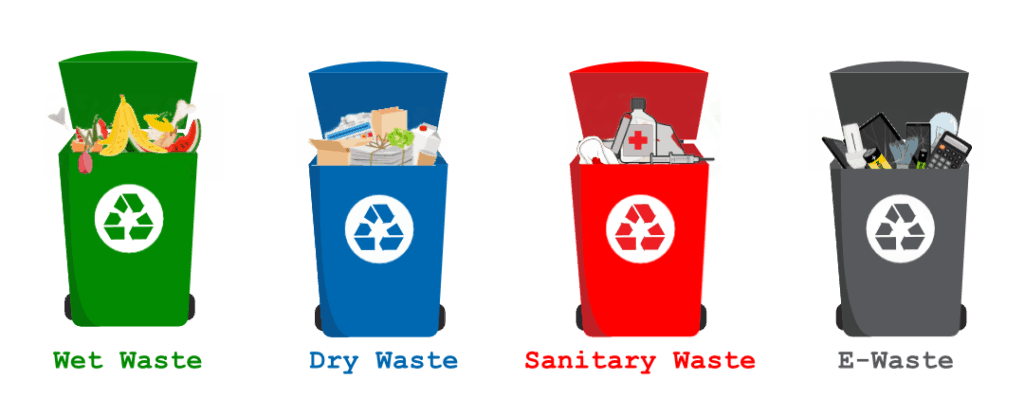
Waste segregation can be defined as the process of identifying, classifying, dividing, and sorting of garbage and waste products in an effort to reduce, reuse and recycle materials.
In order to segregate waste appropriately, it is important to correctly identify the type of waste that is generated. For the purposes of waste segregation at source, waste is identified and classified into the following categories depending on their biological, physical, and chemical properties:
Waste segregation is critical because of the fact that certain types of wastes can be hazardous and can contaminate the environment if not managed correctly. (Some of these types of waste may also have the potential to cause disease or get into water supplies or contaminate the land with different types of leachates.)
When waste is unsegregated, it may get contaminated with different types of waste being stored together. Such waste cannot be treated or managed and most of the time end up being dumped into local dump yards or landfills. With waste segregation, management of different types of waste becomes easier and more efficient, reducing the environmental impact and promoting recycling and reuse.
For ease of waste segregation, the disposal bins are color coded.
| Type of Waste | Color of Bin |
|---|---|
| Wet Waste | Green |
| Dry Waste | Blue |
| Sanitary Waste | Red |
| E-Waste | Black or Grey |
| Hazardous Waste | Black |
The best way to segregate waste is to segregate it at source. To enable this, it is always recommended to place the right type of bin in the respective area.